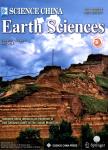Molecular characterization of organic matter transformation mediated by microorganisms under anoxic/hypoxic conditions
作者机构:State Key Laboratory for Marine Environmental ScienceCollege of Ocean and Earth SciencesXiamen UniversityXiamen 361102China Fujian Key Laboratory of Marine Carbon SequestrationXiamen 361102China College of Environment and EcologyXiamen UniversityXiamen 361102China State Key Laboratory of Heavy Oil ProcessingChina University of PetroleumBeijing 102249China
出 版 物:《Science China Earth Sciences》 (中国科学(地球科学英文版))
年 卷 期:2023年第66卷第4期
页 面:894-909页
核心收录:
学科分类:0710[理学-生物学] 1007[医学-药学(可授医学、理学学位)] 100705[医学-微生物与生化药学] 07[理学] 071005[理学-微生物学] 10[医学]
基 金:supported by the National Key Research and Development Project of the Ministry of Science and Technology of China(Grant No.2021QZKK0102) the National Natural Science Foundation of China(Grant Nos.42222604,42188102,92251306,42141003,41861144018 and 42106040) the President’s Fund of Xiamen University(Grant Nos.20720170107 and 20720210076)
主 题:Anoxic/hypoxic Microbial community structure Dissolved organic matter Chemical characteristics of molecule
摘 要:Dissolved organic matter(DOM) in the ocean is one of the largest carbon pools on Earth. Microbial metabolism is an important process that shapes the marine DOM pool. Current studies on the interactions between microorganisms and DOM focus mainly on oxic environments. Few studies have addressed the molecular characteristics of DOM in microbial-mediated transformation under anoxic/hypoxic conditions. As a result of deteriorating water quality due to eutrophication and global warming, anoxia occurs frequently in coastal waters. In this study, we performed an experiment to investigate changes in microbial community responses and the molecular characteristics of DOM in microbial-mediated transformation under hypoxic conditions. We compared microbial-mediated DOM transformation at different dissolved oxygen levels(7, 5, and 2 mg L^(-1)) and in different media(natural and artificial seawater with and without laminarin). We also investigated differences in DOM composition between groups using spectroscopic analysis and ultrahigh-resolution Fourier transform ion cyclotron resonance mass spectrometry. The results showed decreased microbial metabolic activity and delayed community succession at low oxygen(≤2 mg L^(-1)) in natural seawater supplemented with laminarin. The growth of strictly aerobic bacteria such as Pseudomonadaceae and Sphingomonadaceae was inhibited and the total organic carbon utilization rate was reduced by 36.9–46.7% from 4 to 32days. Moreover, tyrosine-like and tryptophan-like components were preserved, while DOM humification and modified aromaticity indices were significantly reduced under low oxygen conditions. This experiment provides justification for further study of the processes and mechanisms of improved labile DOM preservation in anoxic estuarine and coastal waters.



